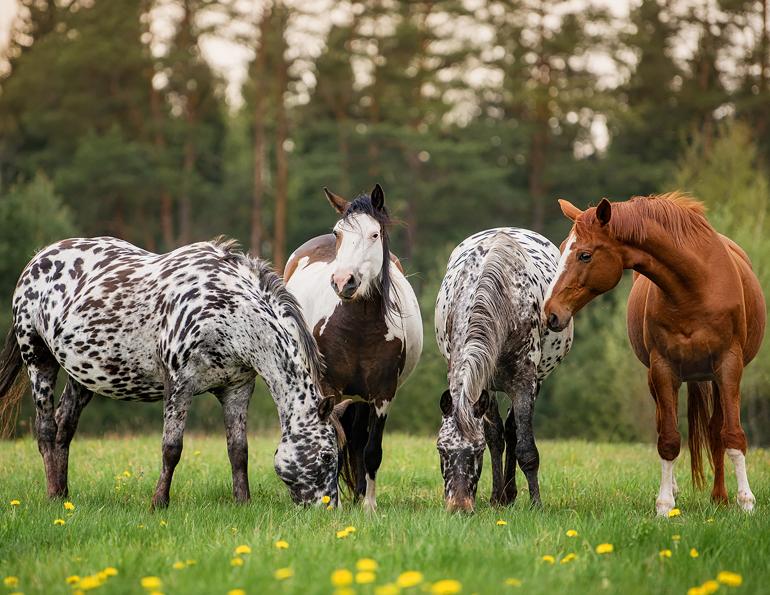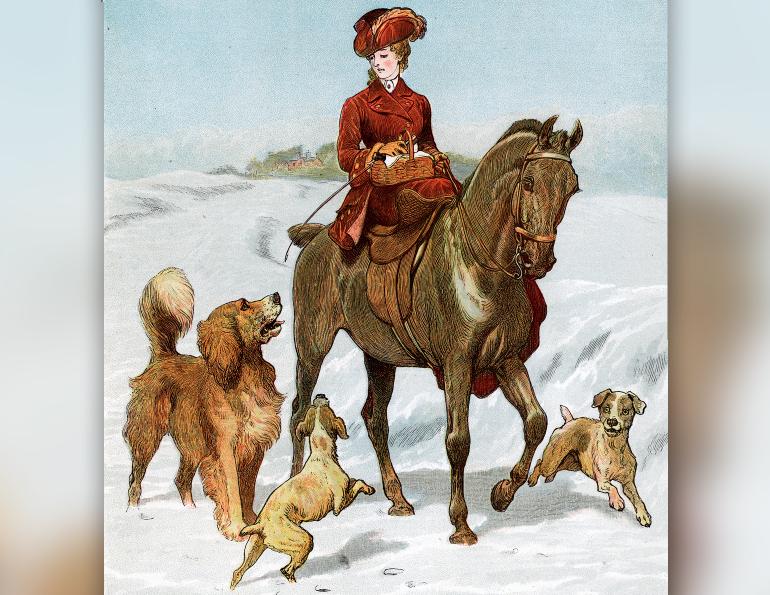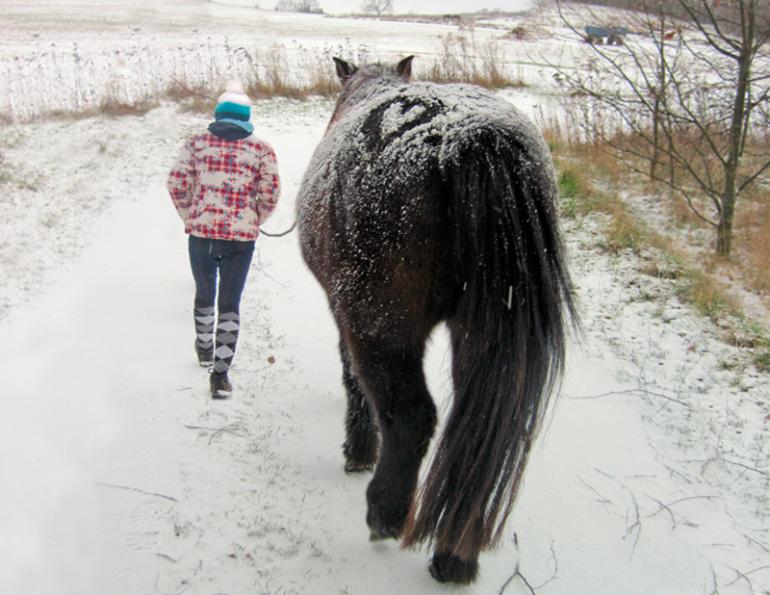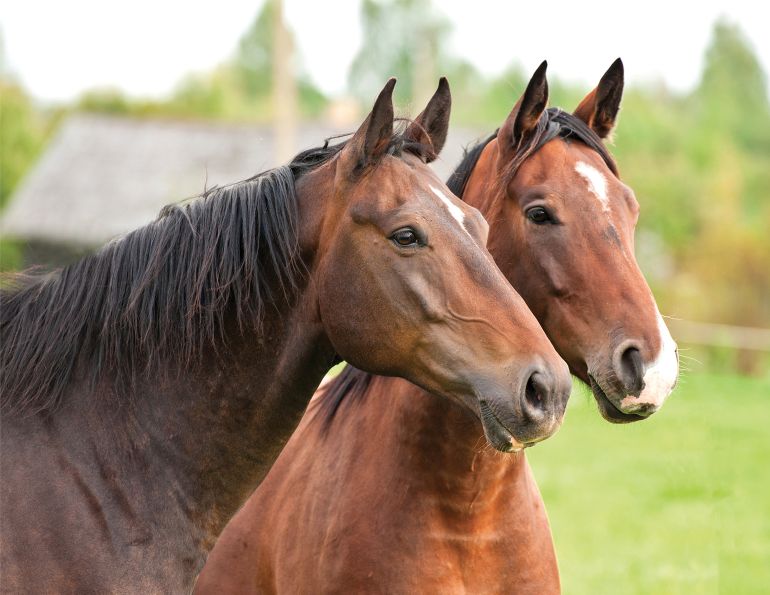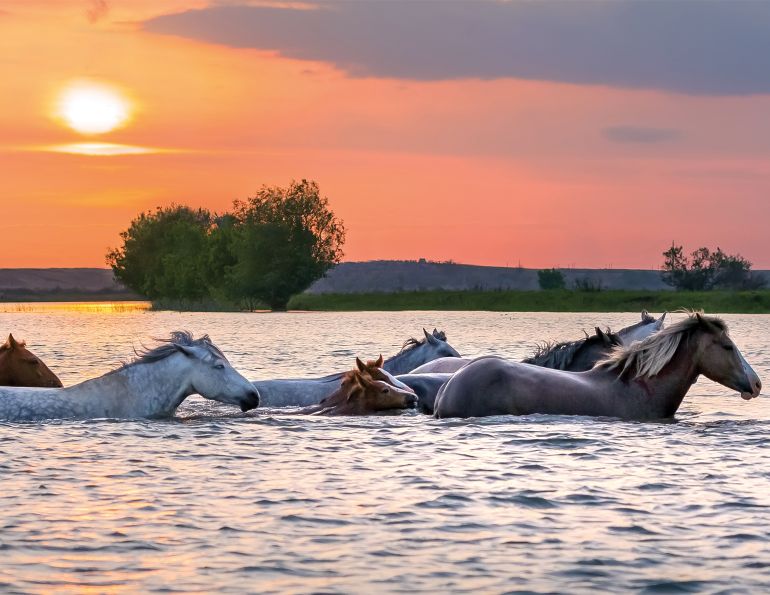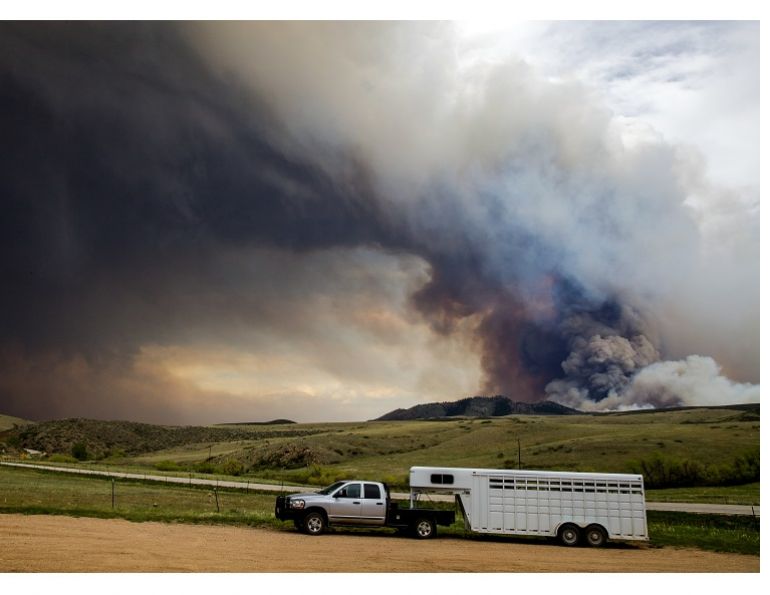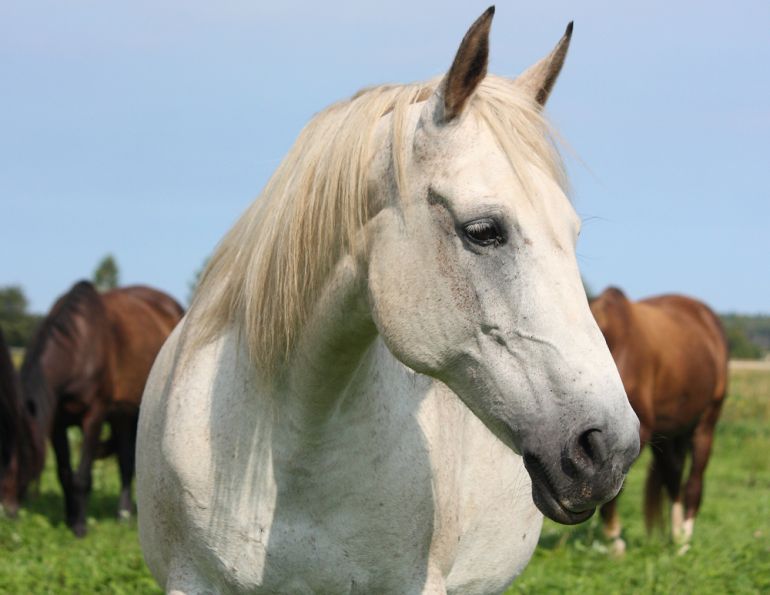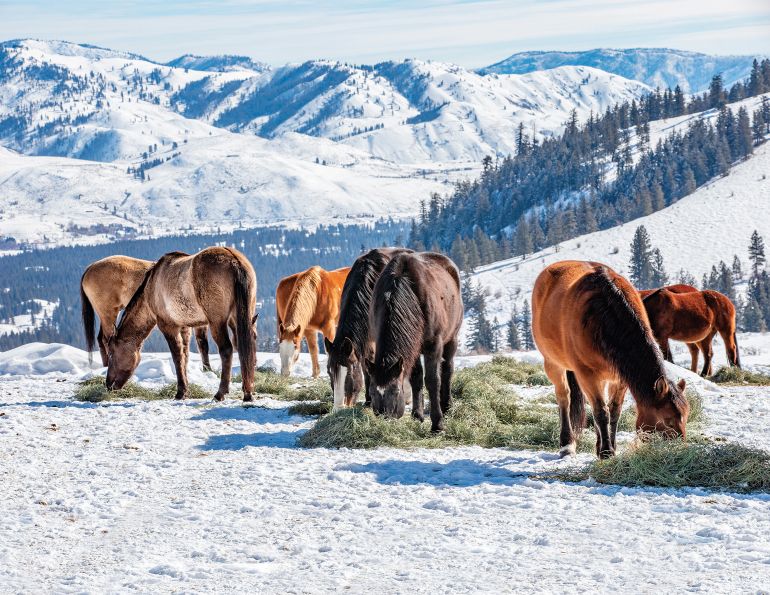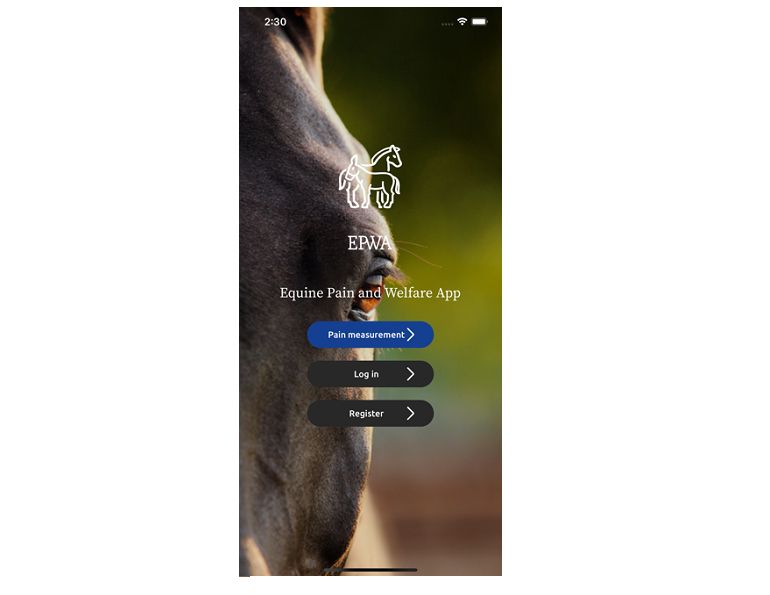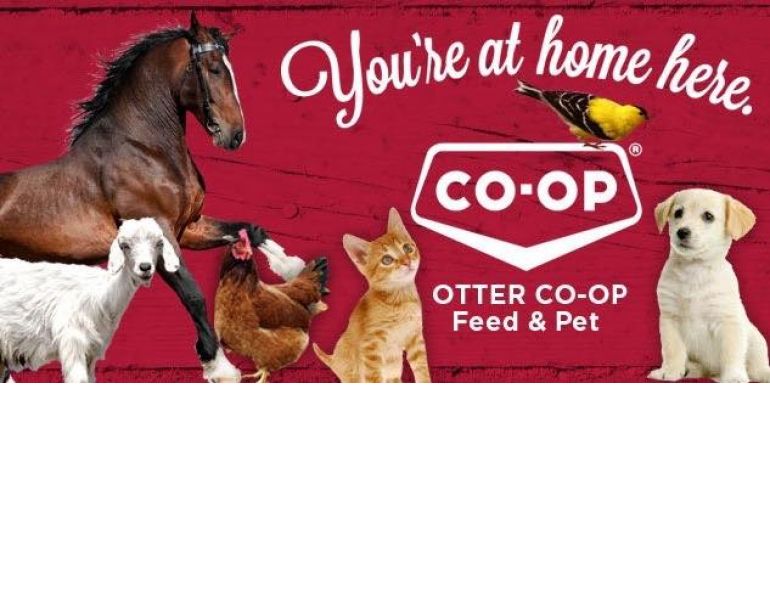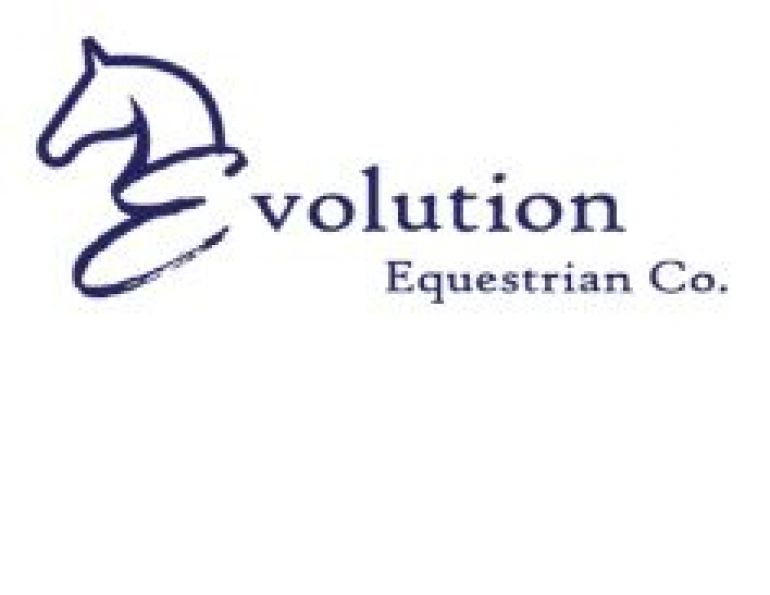By Tania Millen, BSc, MJ
Horse welfare is complex, partly due to the myriad uses, values, and husbandry arrangements for horses. They’re backyard pets, ridden and driven in competition, raced, raised for meat, and used for therapy, recreation, and rodeo. Horses are regularly transported, kept in rural and urban areas, stalls, pens, fields, and pastures, plus managed according to their use. Many horses live on individual properties and their welfare relies on individual owners, making poor welfare difficult to identify.
“We can have all the regulations in the world but if nobody is turning in the neighbour that’s starving their horse or if nobody sees the abused horse in somebody’s backyard, then our regulations aren’t any good,” says Jennifer Woods, a certified animal welfare auditor. She inspects Canadian equine operations and competition venues to ensure they meet acceptable welfare standards, including the Calgary Stampede, as well as rodeo and chuckwagon locations.
“I don’t think the system has failed horses,” says Woods. “I think we have areas of welfare that need to be addressed on individual farms where nobody sees what’s happening. There’s over-breeding. There are people who aren’t feeding their animals properly or providing health care.”
It’s in the best interests for high profile equine professionals such as show jumpers, as well as rodeo and racing connections, to ensure their horses’ well-being. It is what happens where nobody is looking that concerns Woods.

Horse housing affects welfare. Horses are herd animals, and when kept in stalls and individual paddocks they have minimal opportunities to socialize. Photo: Clix Photography
“People who are a problem don’t read horse magazines,” says Woods. “They don’t go to educational symposiums. They aren’t members of an association. They don’t engage and I don’t know if we can reach them. We don’t have a map that tells us who owns a horse. We don’t even know who they are.”
She explains that some horses sent to auction are in horrific condition and may be bought by the “meat man” for slaughter. But the buyers didn’t neglect those horses.
“That neglect is occurring on farms with people who don’t understand how to care for their horses, who have no intention of caring for their horses, and who just leave them out in the field to fend for themselves,” says Woods.
Fortunately, Canada has laws with enforceable rules.
Related: May I? The Role of Consent and Permission with Horses
Are Horses, Cattle?
Legislation is laws that determine acceptable horse management and care. They’re enforced by the Royal Canadian Mounted Police, Canadian Food Inspection Agency (CFIA), or the Society for the Protection and Care of Animals, following applicable regulations.
The Criminal Code (the Act) is the overarching legislation that addresses animal welfare in Canada. Part XI: Wilful and Forbidden Acts in Respect of Certain Property describes offences towards animals and applicable punishments (five years in prison or $10,000). It also describes “cruelty to animals” — causing unnecessary suffering — and the punishment for that, plus states that “failure to exercise reasonable care” can be used as evidence.

Neglect occurs where people don’t understand how to care for their horses or have no intention of caring for them. This severely underweight mare with a nursing foal has badly overgrown hooves and must not be left to fend for herself. Photo: Shutterstock/Wirestock Creators
Equines (horses, donkeys, and mules) are considered livestock under current Canadian legislation. But the Horse Welfare Alliance of Canada website states, “The designation of equine as livestock within provincial and federal legislation, regulations, policies, bylaws, and rules is inconsistent. This causes confusion.”
There’s also work afoot to define school horses at lesson barns as “working equines.” Others feel that therapy horses should be classified as pets or companion animals, equal to dogs, but this re-designation would prevent livestock laws from applying to those horses and leave a gap in their protection.
However, the Criminal Code defines cattle as “cattle or an animal of the bovine species … and includes any horse, mule, ass, pig, sheep or goat.” (According to Encyclopedia Britannica there are two species of wild ass and one domesticated species: the donkey).
So, according to the Act, horses are cattle.
Related: Canada's Wild Horses - An Uncertain Future
Enforcing the Rules
“Canada has very strong regulations, including one of the most comprehensive transport regulations in the world,” says Woods.
Federal regulations pertaining to equines are upheld by Agriculture and Agri-Food Canada (AAFC) and the CFIA. The AAFC is tasked with developing Canada’s agricultural industry. That includes tracking equine infectious anemia, which is identified by a Coggins test.
The CFIA enforces the Health of Animals Act, which regulates the transport of animals and summarizes the feed, water, and rest requirements for animals being transported. Performance riders hauling horses across the Canada-USA border will be familiar with the CFIA’s health paper requirements. The CFIA also regulates humane slaughter and the transportation of live horses from Canada to Japan.

Rodeos, including the Calgary Stampede, have stepped up to make sure horses are well cared for, says certified animal welfare auditor Jennifer Woods. Photo: Dreamstime/Steve Estvanik
Ethical Dilemmas
“I think our regulations are effective in maintaining horse welfare,” says Woods. “But there are people who believe horses should not be used for entertainment purposes [jumping, dressage, rodeo, etcetera] at all. So those people may not think our regulations are strong enough.”
“There’s a difference between animal welfare and the ethical use of animals,” says Woods.
Related: Chain Use vs. Abuse by Horse Experts
Ethics are moral principles that guide our personal actions. They address whether horses should be used by humans and under which circumstances. For example, some people are ethically opposed to racing horses or slaughter.
Welfare refers to basic physical and social well-being. The five internationally recognized freedoms of horse welfare are:
- Freedom from hunger and thirst
- Freedom from discomfort
- Freedom from pain, injury, and disease
- Freedom to express normal behaviour
- Freedom from fear and distress
In the horse industry, welfare and ethics have started overlapping as scientific evidence continues to challenge norms regarding horse use and behaviours. For example, from a welfare standpoint horses require social interaction because they are herd animals. As a result, questions have arisen about the acceptability of keeping horses in individual stalls or pens with minimal opportunities to socialise, something that’s common in horse sport to prevent an injury that sidelines competition.
How-To of Horse Welfare
In addition to federal legislation and regulations, several organizations provide standards and guidance for the day-to-day management, care, and handling of horses.
The National Farm Animal Care Council (NFACC) Code of Practice for the Care and Handling of Equines is the overarching code of practice for horse welfare in Canada. It has ten sections which summarize duty of care, facilities and housing, feed and water needs, health and reproductive management, handling, transportation, and euthanasia of horses. Each section lists requirements, such as “horses must have some form of exercise or turnout” and recommended practices, such as “turn horses out with companions.” The code also has 13 appendices which cover everything from body condition scores to diagrams of how to euthanize by firearm.
Animal welfare audits are written using codes of practice, which provide requirements and recommendations, plus other established animal welfare standards.
Related: How to Safely Refeed the Malnourished Horse
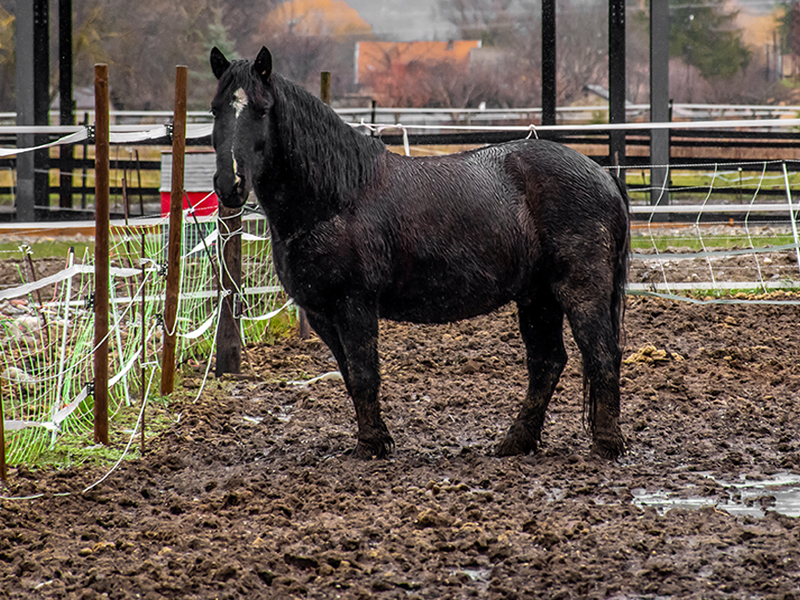
The Code of Practice for the Care and Handling of Equines requires that in muddy conditions horses must, at a minimum, have access to a mud-free, well-drained area in the pasture/yard on which to stand and lie down. Photo: Shutterstock/Kateryna Deinekea
“At the Calgary Stampede we’ve really ramped up the rules to mitigate risks and ensure the horses are well taken care of,” says Woods. “A lot of the rodeos have done that, along with show jumping and racing. There are a lot of rules in place now.”
Equestrian Canada’s (EC) Horse Welfare Code of Conduct applies to horses participating at EC events and on Canada’s equestrian teams. It also applies to “any horse under the care or training of any individual whether at an EC sanctioned event or not” where the individual is somehow related to EC as a rider, trainer, coach, or employee. The code states that horses must be cared for in accordance with the NFACC code and lists fines and suspensions from EC events.
There’s also a Code of Practice for the Care and Handling of Horses on PMU Ranches which summarizes best horse welfare practices for the 18 ranches in Saskatchewan and Manitoba which are currently part of the PMU (pregnant mare urine) industry.
Other organizations publicise position statements. For example, the Canadian Veterinary Medical Association (CVMA) considers equine castration without anesthesia to be animal cruelty and has a position statement regarding the responsibility of veterinary professionals to address animal abuse and neglect.
Related: Continuous Improvement in Equine Ranching
Is It Enough?
Additionally, all of Canada’s provinces and territories have their own animal protection legislation and regulations which vary in terms of the welfare issues they cover, the protection and enforcement they provide, and who’s responsible (see sidebar). Overlap between provincial acts and regulations and the federal Criminal Code means animal welfare offenses can be charged under both provincial and federal laws.
For example, in 2005, an individual in British Columbia was charged with three counts of abusing horses and dogs. They included: willfully permitting unnecessary pain, suffering and injury under the Criminal Code; failing to provide food, water, shelter, and care under the Criminal Code; and permitting animals to be in distress under BC’s Prevention of Cruelty to Animals Act. The judge found all three counts proven “beyond any doubt.”
Municipalities, regional districts, and municipal districts may also have bylaws about animal welfare, enforcement, and responsibilities.
With all these legislative acts and regulations, codes, and position statements, are horses adequately protected in Canada?
“It’s hard to monitor the welfare of horses on individual farms that have no connection to the horse industry,” says Woods. “The responsible horse owners and associations need to find a way to address that.
“As a community, we need to provide more education, outreach and reporting,” she says. “If you see something, you need to report it.”
Related: Equestrianism and Animal Rights
Related: A Conversation with Animal Behaviour Expert Dr. Temple Grandin
These Provincial Acts and Regulations Support Horse Welfare:
- British Columbia: Prevention of Cruelty to Animals Act, Animal Care Codes of Practice Regulation
- Alberta: Animal Protection Act, Animal Protection Regulation
- Saskatchewan: Animal Protection Act, 2018; Animal Protection Regulation, 2018; Animal Health Act; Animal Health Regulations; Stray Animals Act (for livestock) and Stray Animals Regulation, 1999
- Manitoba: Animal Care Act, Animal Care Regulation
- Ontario: Provincial Animal Welfare Services Act (PAWS Act), 2019; Disposal of Deadstock Regulation; Livestock Community Sales Act; Livestock Community Sales Regulation; Racing Commission Act; Rules of Racing
- Quebec: Animal Welfare and Safety Act, 2021; Animal Health Protection Act
- New Brunswick: Society for the Prevention of Cruelty Act
- Nova Scotia: Animal Protection Act, Animal Health and Protection Act
- Prince Edward Island: Animal Welfare Act, Animal Welfare Regulations
- Newfoundland and Labrador: Animal Health and Protection Act, Animal Protection Regulations, Animal Protection Standards Regulations
- Yukon: Animal Protection Act
- Northwest Territories and Nunavut: Herd and Fencing Act
Resources:
- Agriculture and Agri-Food Canada
- Canadian Food Inspection Agency
- Canadian Veterinary Medical Association
- Criminal Code
- Equestrian Canada
- Horse Welfare Alliance of Canada
- Humane Canada
- National Farm Animal Care Council
- North American Equine Ranching Information Council
- University of British Columbia Animal Welfare Program
- University of Guelph, Campbell Centre for the Study of Animal Welfare
- University of Prince Edward Island, Sir James Dunn Animal Welfare Centre
Main Photo: Shutterstock/Rita Kochmarjova



